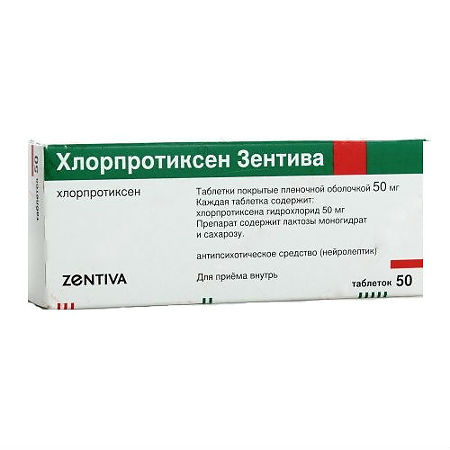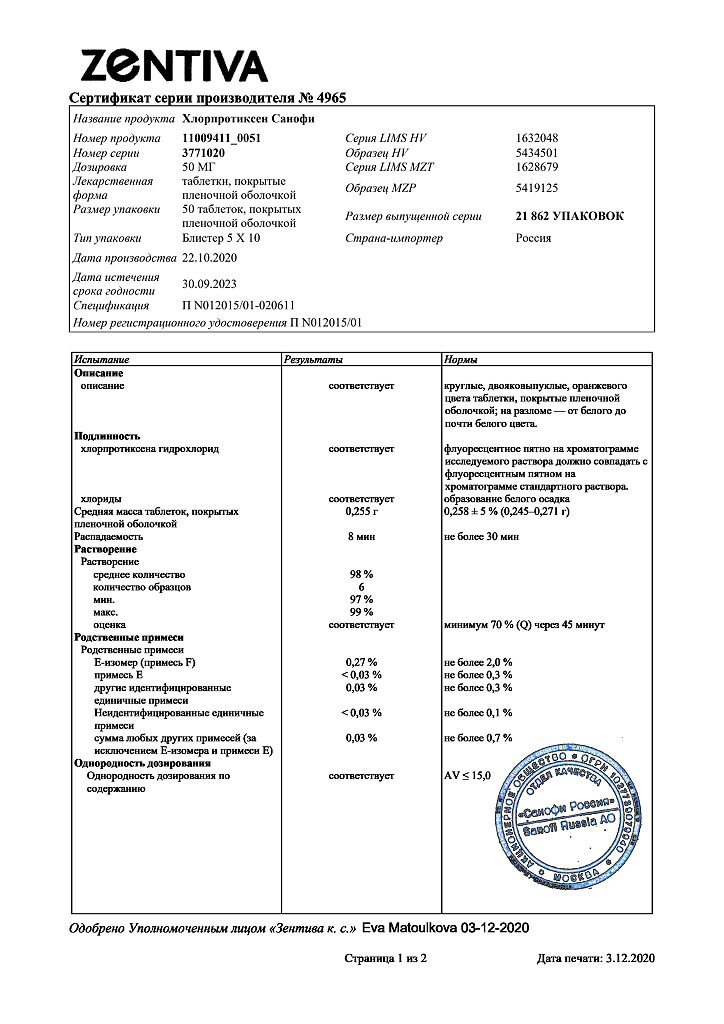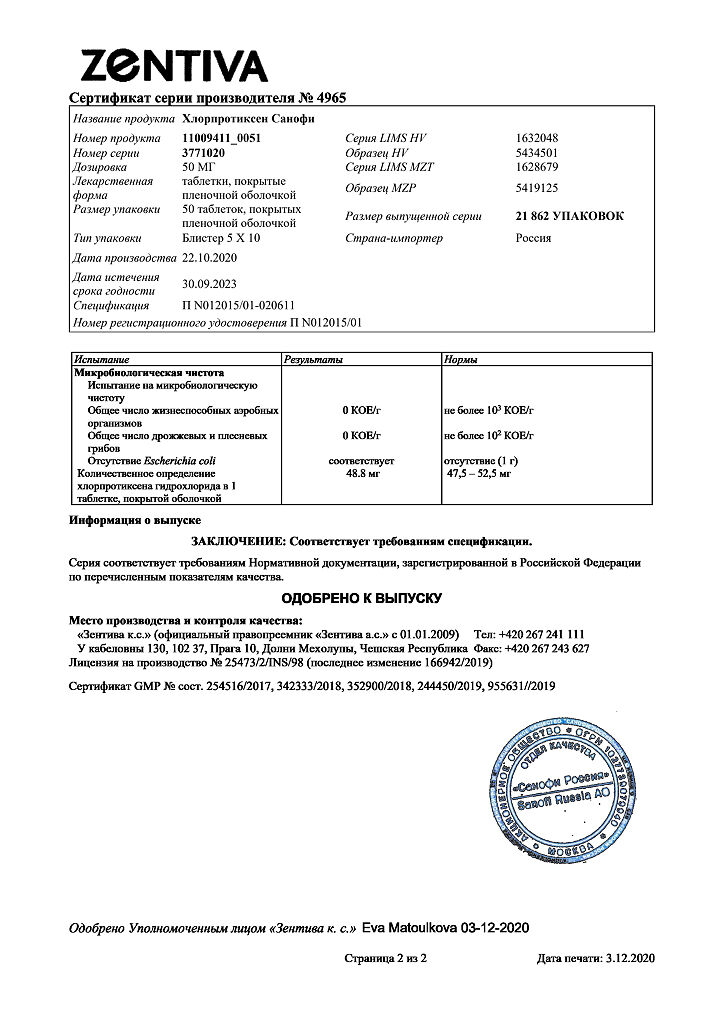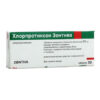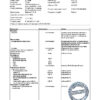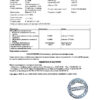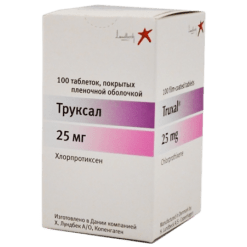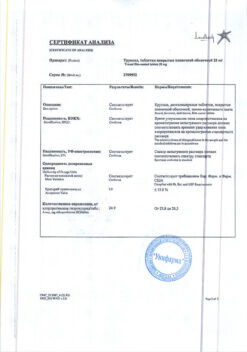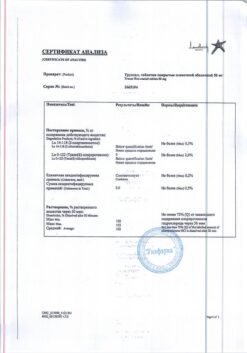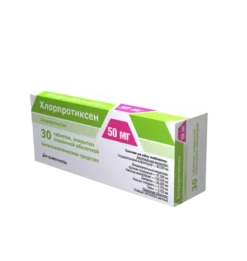No products in the cart.
Sanofi Chlorprotixen, 50 mg 50 pcs
€13.36 €11.13
Out of stock
(E-mail when Stock is available)
Description
Antipsychotic agent (neuroleptic), derivative of thioxanthene. It has antipsychotic, antidepressant, sedative, antiemetic effects, has alpha-adrenoblocking activity.
It is believed that the antipsychotic action is associated with blockade of postsynaptic dopamine receptors in the brain. Antiemetic action is associated with blockade of the chemoreceptor trigger zone of the medulla oblongata.
The sedative effect is caused by indirect weakening of the activity of the reticular system of the brain stem. It suppresses release of most hormones of the hypothalamus and pituitary gland.
But as a result of the blockade of the prolactin inhibitory factor, which inhibits the release of prolactin from the pituitary gland, the concentration of prolactin increases.
The thioxanthenes are similar to the piperazine derivatives of phenothiazine in their chemical structure and pharmacological properties.
Indications
Indications
Psychoses and psychotic states, accompanied by anxiety, fear, psychomotor agitation, aggressiveness, incl. for depressive-paranoid, circular schizophrenia, for simple sluggish schizophrenia with psychopath-like and neurosis-like symptoms and for other mental illnesses;
discirculatory encephalopathy, traumatic brain injury (as part of combination therapy), alcoholic delirium; sleep disorders due to somatic diseases;
the need for long-term therapy for states of excitation and anxiety, psychosomatic, neurotic and behavioral disorders in children;
convulsive cough, spastic conditions in the gastrointestinal tract;
premedication;
dermatoses accompanied by persistent itching;
allergic reactions.
Pharmacological effect
Pharmacological effect
Antipsychotic drug (neuroleptic), thioxanthene derivative. It has antipsychotic, antidepressant, sedative, antiemetic effects, and has alpha-adrenergic blocking activity.
It is believed that the antipsychotic effect is associated with blockade of postsynaptic dopamine receptors in the brain. The antiemetic effect is associated with blockade of the chemoreceptor trigger zone of the medulla oblongata.
The sedative effect is due to an indirect weakening of the activity of the reticular system of the brain stem. Suppresses the release of most hormones of the hypothalamus and pituitary gland.
However, as a result of blockade of prolactin inhibitory factor, which inhibits the release of prolactin from the pituitary gland, the concentration of prolactin increases.
The chemical structure and pharmacological properties of thioxanthenes are similar to piperazine derivatives of phenothiazine.
Special instructions
Special instructions
Chlorprothixene should be prescribed with caution to patients suffering from epilepsy, parkinsonism, with severe cerebral atherosclerosis, with a tendency to collapse, with severe cardiovascular and respiratory failure, with severe impaired liver and kidney function, diabetes mellitus, prostate hypertrophy.
The use of Chlorprothixene may lead to a false positive result when conducting an immunobiological urine test for pregnancy, a false increase in the level of bilirubin in the blood, and a change in the QT interval on the electrocardiogram.
During treatment with the drug, it is recommended to refrain from drinking alcoholic beverages and avoid increased insolation.
Impact on the ability to drive vehicles and operate machinery
Taking Chlorprothixene has a negative effect on activities that require a high speed of mental and physical reactions (for example, driving vehicles, servicing machines, working at heights, etc.).
Active ingredient
Active ingredient
Chlorprothixene
Composition
Composition
1 film-coated tablet contains:
Active substance:
chlorprothixene hydrochloride 50 mg,
Excipients:
corn starch – 37.5 mg,
lactose monohydrate – 135 mg,
sucrose – 20 mg,
calcium stearate – 3.75 mg,
talc – 3.75 mg.
Film shell composition:
hypromellose 2910/5 – 3.6594 mg, macrogol 6000 – 0.1333 mg, macrogol 300 – 0.9166 mg, talc – 2.4194 mg, titanium dioxide – 0.3423 mg, iron dye yellow oxide – 0.029 mg.
Pregnancy
Pregnancy
Chlorprothixene should, if possible, not be prescribed to pregnant women or during breastfeeding.
Contraindications
Contraindications
hypersensitivity to the components of Chlorprothixene;
CNS depression of any origin (including those caused by alcohol, barbiturates or opiates);
comatose states;
vascular collapse;
diseases of the hematopoietic organs;
pheochromocytoma.
Side Effects
Side Effects
Drowsiness, tachycardia, dry mouth, increased sweating, difficulty in accommodation. These side effects, which usually occur early in therapy, often disappear as therapy continues.
Orthostatic hypotension may occur, especially when using Chlorprothixene in high dosages.
Dizziness, dysmenorrhea, skin rashes, and constipation are rare. Extrapyramidal symptoms are especially rare.
Isolated cases of a decrease in the convulsive threshold, the occurrence of transient benign leukopenia and hemolytic anemia have been described.
With long-term use, especially in high doses, the following may be observed: cholestatic jaundice, galactorrhea, gynecomastia, decreased potency and/or libido, increased appetite, increased body weight.
Interaction
Interaction
The inhibitory effect of chlorprothixene on the central nervous system may be enhanced when taken simultaneously with ethanol and ethanol-containing drugs, anesthetics, opioid analgesics, sedatives, hypnotics, and neuroleptics.
The anticholinergic effect of chlorprothixene is enhanced by the simultaneous use of anticholinergic, antihistamine and antiparkinsonian drugs.
The drug enhances the effect of antihypertensive drugs.
The simultaneous use of chlorprothixene and adrenaline can lead to arterial hypotension and tachycardia.
The use of chlorprothixene leads to a decrease in the threshold of convulsive activity, which requires additional adjustment of the dose of antiepileptic drugs in patients with epilepsy.
The ability of chlorprothixene to block dopamine receptors reduces the effectiveness of levodopa.
Extrapyramidal disorders may occur with the simultaneous use of phenothiazines, metoclopramide, haloperidol, and reserpine.
Overdose
Overdose
Symptoms. Drowsiness, hypo- or hyperthermia, extrapyramidal symptoms, convulsions, shock, coma.
Treatment. Symptomatic and supportive.
Gastric lavage should be performed as quickly as possible, and the use of a sorbent is recommended.
Measures should be taken to maintain the functioning of the respiratory and cardiovascular systems.
Adrenaline should not be used because this may lead to a subsequent decrease in blood pressure.
Seizures can be treated with diazepam, and extrapyramidal disorders with biperiden.
Storage conditions
Storage conditions
In a place protected from light, at a temperature not exceeding 25°C.
Shelf life
Shelf life
3 years.
Manufacturer
Manufacturer
Zentiva k.s., Czech Republic
Additional information
| Shelf life | 3 years. |
|---|---|
| Conditions of storage | In a place protected from light, at a temperature not exceeding 25°C. |
| Manufacturer | Zentiva k.s., Czech Republic |
| Medication form | pills |
| Brand | Zentiva k.s. |
Other forms…
Related products
Buy Sanofi Chlorprotixen, 50 mg 50 pcs with delivery to USA, UK, Europe and over 120 other countries.

